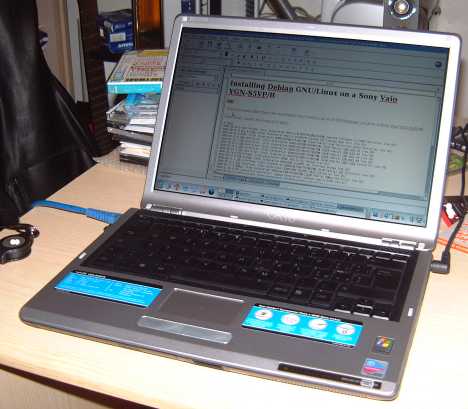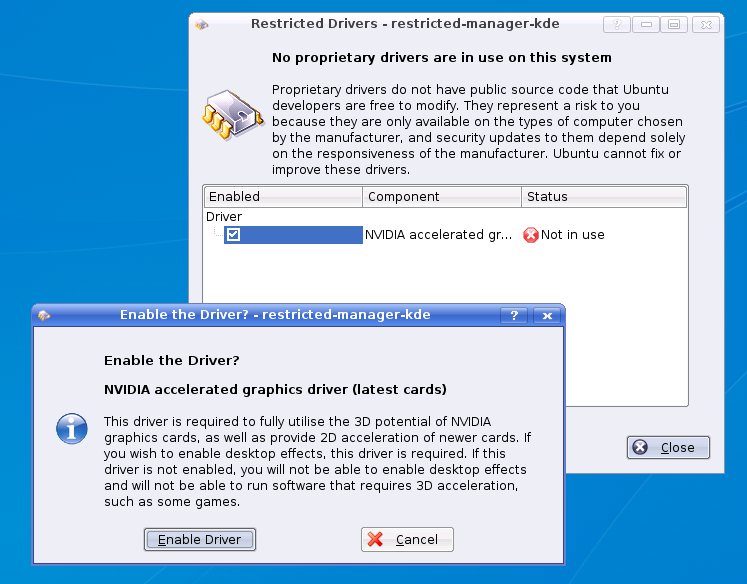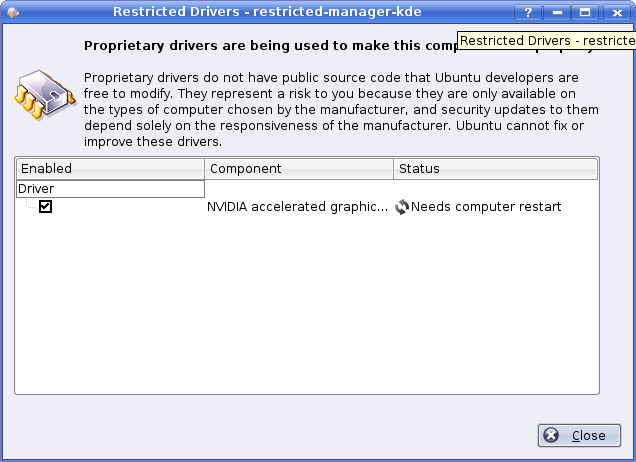
 |
# lspci
0000:00:00.0 Host bridge: Intel Corporation Mobile 915GM/PM/GMS/910GML Express Processor to DRAM Controller (rev 03)
0000:00:01.0 PCI bridge: Intel Corporation Mobile 915GM/PM Express PCI Express Root Port (rev 03)
0000:00:1b.0 0403: Intel Corporation 82801FB/FBM/FR/FW/FRW (ICH6 Family) High Definition Audio Controller (rev 03)
0000:00:1d.0 USB Controller: Intel Corporation 82801FB/FBM/FR/FW/FRW (ICH6 Family) USB UHCI #1 (rev 03)
0000:00:1d.1 USB Controller: Intel Corporation 82801FB/FBM/FR/FW/FRW (ICH6 Family) USB UHCI #2 (rev 03)
0000:00:1d.2 USB Controller: Intel Corporation 82801FB/FBM/FR/FW/FRW (ICH6 Family) USB UHCI #3 (rev 03)
0000:00:1d.3 USB Controller: Intel Corporation 82801FB/FBM/FR/FW/FRW (ICH6 Family) USB UHCI #4 (rev 03)
0000:00:1d.7 USB Controller: Intel Corporation 82801FB/FBM/FR/FW/FRW (ICH6 Family) USB2 EHCI Controller (rev 03)
0000:00:1e.0 PCI bridge: Intel Corporation 82801 Mobile PCI Bridge (rev d3)
0000:00:1f.0 ISA bridge: Intel Corporation 82801FBM (ICH6M) LPC Interface Bridge (rev 03)
0000:00:1f.1 IDE interface: Intel Corporation 82801FB/FBM/FR/FW/FRW (ICH6 Family) IDE Controller (rev 03)
0000:00:1f.2 IDE interface: Intel Corporation 82801FBM (ICH6M) SATA Controller (rev 03)
0000:00:1f.3 SMBus: Intel Corporation 82801FB/FBM/FR/FW/FRW (ICH6 Family) SMBus Controller (rev 03)
0000:01:00.0 VGA compatible controller: nVidia Corporation: Unknown device 0168 (rev a1)
0000:06:05.0 CardBus bridge: Texas Instruments PCI7420 CardBus Controller
0000:06:05.2 FireWire (IEEE 1394): Texas Instruments PCI7x20 1394a-2000 OHCI Two-Port PHY/Link-Layer Controller
0000:06:05.3 Mass storage controller: Texas Instruments PCI7420/PCI7620 Dual Socket CardBus and Smart Card Cont. w/ 1394a-2000 OHCI Two-Port PHY/Link-Layer Cont. an
0000:06:08.0 Ethernet controller: Intel Corporation 82562ET/EZ/GT/GZ - PRO/100 VE (LOM) Ethernet Controller Mobile (rev 03)
0000:06:0b.0 Network controller: Intel Corporation PRO/Wireless 2200BG (rev 05)
| Processor | OK | Also frequency scaling and ACPI |
| Disk | Almost | DMA does not work on the hard disk |
| X configuration | OK | Better with NVIDIA drivers |
| Networking | OK | both wired and wireless |
| Sound | OK | |
| PCMCIA | Not tested | Needs some adjustments to make it work |
| DVDRW | OK | |
| Modem | OK | works Linuxant drivers |
| USB | OK | |
| Firewire | Not tested | |
| Bluetooth | OK |
Basically, almost everything works immediately after the installation of Kubuntu (if you compare this page with the one describing the installation of Debian, you can understand why I decided to leave Debian and switch to Kubuntu - probably, however, the problems with Debian were also due to the fact that I performed that some years ago...).
Kubuntu is really a user-friendly Linux distribution, with all the power of Debian :-)
In the following I'll detail some parts.


Suspend-to-Disk (aka "Hibernate") work, provided you don't use the nvidia driver: you need to use the nv driver to make it work.
Suspend-to-RAM (aka "Suspend") does not work.
Does not work completely: you manage to project but not to see what you project on your screen.
Though not displayed, an embedded soft modem may reside in this Audio card:The following command shows:
0000:00:1b.0 0403: Intel Corporation 82801FB/FBM/FR/FW/FRW (ICH6 Family) High Definition Audio Controller (rev 03)
Support is in an active developement stage. There is always an audio codec(s)
+ (optionally) modem. ALSA HDA setup is likely automatic, but can be maually done with:
su - root
modprobe snd-hda-intel
Information on the chips should map into /proc/asound/ folders.
cat /proc/asound/card0/codec#1
Codec: Generic 14f1 ID 2bfa
Address: 1
Vendor Id: 0x14f12bfa
Subsystem Id: 0x0
Revision Id: 0x90000
Accesses
to this page









 |
|